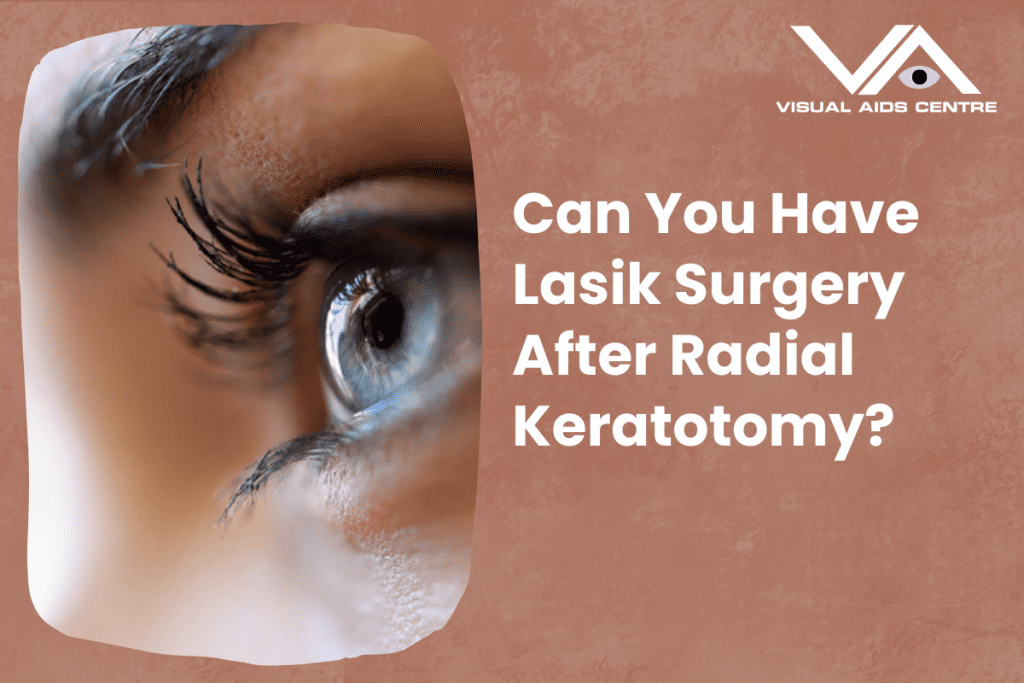Table of Contents
ToggleLASIK is preferred as a secondary refractive treatment if the patient is a good candidate rather than PRK, which many physicians perform following Radial Keratotomy. In addition to lowering the likelihood of postoperative haze, this preserves the use of PRK for any other procedures necessary for the future due to progressive hyperopic shift or cataract surgery.

Consequences
The distinction between these choices’ potential short-term and long-term effects is useful. And there is a higher incidence of haze with PRK than with earlier corneal surgery, such as RK. In addition, with every PRK surgery performed after RK, the prevalence of haze increases. As an illustration, a patient who is 46 years old would benefit from PRK instead of RK.
The patient may require a second operation in 10 or 20 years if he has undergone a hyperopic shift since the RK. Each corneal operation brings a higher risk of haze. Surgeons always think about the issue in the long run, and there are several things to consider. Surgeons always think about the issue in the long run, and there are several things to consider. As less tissue is removed during a PRK procedure, the danger of haze is reduced. Hence it is preferred to utilize the procedure for the minor correction possible.
Start with LASIK, if possible. The refractive error of the patient is closer to Plano after LASIK. If PRK is required as a follow-up treatment in six months, it would be a more conservative procedure. If LASIK does, however, produce the required refractive outcome, then the PRK operation is still possible for the patient later in life.
Long-term Conditions
The surgeon will want to consider two long-term conditions: progressive hyperopic shift and cataracts. The surgeon will still have PRK as a possible enhancement if LASIK was previously performed on the patient if he has a progressive hyperopic shift. Also, as they age and get older, these people may have cataracts. Early cataracts afflict this patient group more than those who have not had refractive surgery, even though individuals with prior cataract surgery experience cataracts at a higher rate. Early cataracts and a multifocal cornea from prior refractive surgery, particularly RK, can significantly worsen picture quality much more quickly than the same early cataract in a person without prior refractive surgery. Surgeons must consider that many of these individuals will eventually need cataract surgery. It is also good to choose additional corneal refractive surgery after cataract surgery because the implant estimates from prior corneal surgery could be more precise.
Another impact is that ‘epithelial hyperplasia’ occurs after PRK because the uppermost layer thickens. Some risks are involved, so it is preferred to avoid them as a result. As the surgeon, the sequence of events to be: first, LASIK; second, the PRK or cataract; and third, the PRK, if the patients needed all three procedures—PRK, LASIK, and cataract surgery—in the long term (if the patient has had previous cataract). There are also a few unique nuances to consider. Thus the presence of epithelial plugs substantially increases the likelihood of epithelium sprouting under the corneal flap. If the patient has significant or considerable epithelial plugs in the incision, LASIK eye surgery is probably not the best option for them. The epithelium sprouting beneath the flap, which can be challenging to diagnose, is one of the dreaded side effects of LASIK following RK, as is well known. The patient’s consent is informed consent, which is crucial under these circumstances. There is a chance that clearing out that epithelium will occur if the patient has recurrent epithelial ingrowth under the flap. In certain instances, flap amputation or removal may be necessary if epithelial ingrowth under the flap keeps returning.
Despite this, numerous RK procedures have been followed by LASIK, and amputating a flap is uncommon. To remove recurring epithelial ingrowth, surgeons sutured the flap in two cases. Although it has been dealt with, dealing with corneal haze after PRK after RK has not affected patients as much and is preferred to dealing with epithelium under the flap. Even though such can occur, this is due to the patient’s ability to function being severely impaired by the haze left over from prior corneal surgery.
It is crucial that the incisions are small, completely healed, and at least two years post-op. Furthermore, prior ocular surface conditions like dry eye should have received rigorous treatment. Doctors, with little hesitation, often prescribe punctual plugs, Restasis, and sleep creams. To ensure their recovery is as effective as possible, they advise patients to avoid using a ceiling fan or any other device that could dry up their skin.
Can you have Lasik surgery after radial keratotomy?
Patients with RK may be candidates for photorefractive keratectomy (PRK), a procedure that corrects refractive errors and is similar to LASIK. However, LASIK may be difficult because the RK cuts do not work well with the LASIK flap. The best option at age 60 is either delaying cataract surgery or getting a refractive lens exchange, even though PRK can successfully reduce refractive error after RK (RLE). The latter is similar to cataract surgery in that a corrective lens transplant can replace the crystalline lens that develops into a cataract later in life. Numerous implants can be used to correct eyesight. Which one is optimal for your eye can be discussed with your ophthalmologist. The bottom line is that, despite having had an RK procedure in the past, you have choices for vision correction. Generally speaking, keep those flaps open. Patients may occasionally require an augmentation if there is a high refractive residual error. Lifting the flap and using a laser is one method. It is always advisable to research and consult your doctors before opting for anything.













